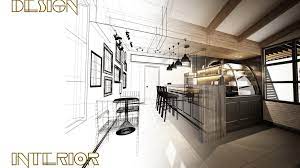Exploring the Intersection of Architecture and Interior Design

The Art of Interior Design in Architecture
Interior design plays a crucial role in architecture, as it focuses on creating functional, aesthetically pleasing, and harmonious spaces within a built environment. The art of interior design goes beyond just selecting colors and furniture; it involves understanding how people interact with their surroundings and designing spaces that enhance their quality of life.
Architects and interior designers work together to create spaces that not only look beautiful but also serve a purpose. They consider factors such as lighting, acoustics, ergonomics, and sustainability when designing interiors. By carefully planning the layout, materials, and finishes of a space, interior designers can transform ordinary rooms into extraordinary living or working areas.
One key aspect of interior design is creating a sense of unity and harmony throughout a building. This can be achieved through the use of consistent color schemes, materials, and design elements that tie different spaces together. By paying attention to details such as proportions, scale, and texture, interior designers can create cohesive environments that flow seamlessly from one room to another.
Another important consideration in interior design is functionality. Spaces must be designed to meet the needs of the people who will use them. This involves carefully planning the layout of furniture, fixtures, and equipment to optimize usability and efficiency. Interior designers also take into account accessibility requirements and safety regulations to ensure that spaces are comfortable and secure for occupants.
Sustainability is an increasingly important aspect of interior design in modern architecture. Designers are using eco-friendly materials and energy-efficient technologies to create environmentally responsible interiors. By incorporating natural light, ventilation systems, and green building practices into their designs, architects and interior designers are reducing the environmental impact of buildings while creating healthy indoor environments for occupants.
In conclusion, interior design is an essential component of architecture that enhances the functionality, aesthetics, and sustainability of built environments. By collaborating with architects and other professionals, interior designers play a vital role in creating inspiring spaces that enrich the lives of those who inhabit them.
5 Essential Tips for Crafting Functional and Aesthetic Interiors in Architectural Design
- Consider the function and purpose of each space before designing its interior.
- Choose a cohesive color palette to create a harmonious look throughout the space.
- Balance different elements such as lighting, furniture, and accessories for a visually appealing design.
- Incorporate natural elements like plants or materials to bring warmth and texture to the space.
- Pay attention to details such as textures, patterns, and finishes to add depth and interest to the design.
Consider the function and purpose of each space before designing its interior.
When approaching architecture interior design, it is crucial to consider the function and purpose of each space before diving into the interior design process. Understanding how a space will be used and what activities will take place within it allows designers to tailor their designs to meet the specific needs of the occupants. By carefully analyzing the requirements of each space, designers can create interiors that not only look aesthetically pleasing but also enhance the functionality and usability of the environment. This thoughtful approach ensures that every element in the design serves a purpose and contributes to creating a harmonious and efficient living or working space.
Choose a cohesive color palette to create a harmonious look throughout the space.
When it comes to architecture interior design, selecting a cohesive color palette is key to achieving a harmonious look throughout the space. By choosing colors that complement each other and flow seamlessly from one room to another, you can create a sense of unity and balance in the design. A well-thought-out color scheme can enhance the aesthetic appeal of the space, create visual interest, and evoke the desired mood or atmosphere. Whether you opt for bold contrasts or subtle tones, a cohesive color palette can tie different elements together and elevate the overall design concept.
Balance different elements such as lighting, furniture, and accessories for a visually appealing design.
To achieve a visually appealing interior design in architecture, it is crucial to balance different elements such as lighting, furniture, and accessories. Properly balancing these elements can create a harmonious and cohesive look that enhances the overall aesthetics of a space. By carefully considering the placement of lighting fixtures to illuminate key areas, selecting furniture that complements the style and scale of the room, and incorporating accessories that add personality and charm, designers can achieve a well-balanced design that is both functional and visually pleasing.
Incorporate natural elements like plants or materials to bring warmth and texture to the space.
Incorporating natural elements such as plants or organic materials into interior design can significantly enhance the ambiance of a space by adding warmth and texture. Plants not only bring a touch of nature indoors but also improve air quality and create a sense of tranquility. Similarly, using materials like wood, stone, or bamboo can introduce earthy tones and tactile qualities that evoke a feeling of coziness and connection to the natural world. By integrating these elements thoughtfully, designers can create inviting and harmonious environments that promote well-being and comfort for occupants.
Pay attention to details such as textures, patterns, and finishes to add depth and interest to the design.
When focusing on architecture interior design, it is crucial to pay attention to details such as textures, patterns, and finishes. These elements play a significant role in adding depth and interest to the overall design of a space. By carefully selecting and incorporating different textures, patterns, and finishes, designers can create visual appeal and tactile richness that enhance the atmosphere of the room. Whether it’s through contrasting textures for a dynamic look or harmonizing patterns for a cohesive feel, attention to these details elevates the design and creates a more engaging and inviting environment for occupants.
